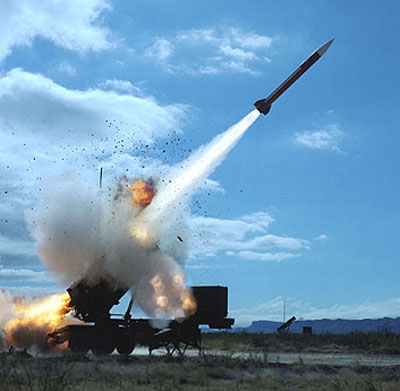About 40 years ago, Ronald Reagan and U.S. Senator Malcolm Wallop shared breakfast at U.S. Senator Paul Laxalt’s ranch. Virtually no one knew that this meeting took place or understood how important it would be to America’s security. As friends shared breakfast, Wallop explained the need for a robust missile defense — including developing a space-based defensive system. Once elected to office, President Reagan made it a national goal to develop effective high-tech defenses against missile attacks. That policy objective was an important factor in the U.S. winning the Cold War. Simply stated, even before missile defense was able to shoot down a missile, it was helping America defeat the Soviets.
During most of the last decade, missile defense was de-emphasized. It was a self-evidently foolish policy decision even though some offered misguided defenses of it. But now, given recent news from North Korea, few could argue that the Obama Administration’s disdain for missile defense has served America’s interests. Kim Jong Un has pushed North Korea’s nuclear program to develop nuclear intercontinental ballistic missiles that can reach our West Coast. Pyongyang intends to threaten not just the West Coast, but all of America. Iran is headed in the same dangerous direction as North Korea.
These risks are no longer simply a theoretical problem in the long term. They have become real and serious problems in the immediate and short term. And they will only become greater threats and more severe risks. It would have been wise to have spent the past decade preparing for this day. Sadly, the Obama Administration had other priorities and viewed a robust defense of America as “destabilizing.”
Regardless of past mistakes and misjudgments, we need to move forward in a way that protects America from the threat of nuclear missiles. We need to renew our focus on developing a robust missile defense as Ronald Reagan and Malcolm Wallop envisioned.
Here are four key things Congress and the Administration must do.
First, we need to increase the number of missile interceptors we have in our inventory. We need to go from 44 to 100 interceptors, as a starting point. Just a few weeks ago, we had a successful test in which we intercepted and destroyed an intercontinental ballistic missile high above the earth at the peak of its arched flight while it was above our atmosphere — in outer space. We also need to upgrade the earlier interceptors in our inventory to make them as capable and updated as the most recent versions. Having more upgraded interceptors allows us to defend against a growing threat and it allows our military to periodically stage tests that allow them to better protect us.
Next, we need to develop a third interceptor defense site — one in the eastern United States. As part of this, we should consider developing a transportable defensive interceptor launcher. This would serve many purposes — including broadening the area that could be defended and allowing us to move transportable interceptor launchers on short notice to a hot spot where it is needed.
Third, we need to renew our commitment to developing the next generation of missile defense technology. Missiles are growing more capable and dangerous every year. We must have our defensive capabilities growing and advancing, as well. We should be developing a next generation kill vehicle — the heart of a missile interceptor — that can track and destroy multiple nuclear warheads. We also absolutely must begin developing a space-based missile defense system. This would allow us to see the missile launches earlier and provide more time and multiple opportunities to destroy the missile. It is worth noting that this is precisely the sort of defensive system that senators Wallop and Laxalt and Ronald Reagan discussed at breakfast about 40 years ago.
Finally, America must continue to be innovative in how we accomplish these goals. Some in government think that having a government agency take over the integration of big technology projects will produce some benefit. But the most likely outcomes will be: (1) dramatically higher costs; (2) substantially less innovation; and (3) perpetually bigger government that will reduce our ability to fund future innovation. None of this is positive.
Here is one of life’s undeniable truths — government is typically not innovative and it is rarely a low-cost producer, as it does not have to respond to market forces. Government bureaucracy tends to defend the status quo and its own bureaucracy status above all else.
America landed on the moon and built the world’s most powerful military during the Cold War by harnessing America’s natural dynamism and innovative spirit. Government agencies defined the goals and provided oversight along the way, but the American know-how from outside of government did the lion’s share of the innovating, developing and integrating. Our adversaries tried the “government as innovator” model and came up short. The incentives in the two systems determined the outcome.
We should keep the model that harnesses American ingenuity and innovation, and reject any model that has government pretending that it can be the focal point of innovation and cost savings. Those who foolishly advocate for this “new” model and call it “reform” have not learned the lessons of history and are hoping for something that cannot be. The institutional incentives in government preclude the very outcomes they claim to seek.
Missile defense was once largely a partisan issue — let’s hope that today the threat wakes everyone up to look past labels and do what is imperative for America’s defense and security. Congress must not allow Kim Jong Un, Iran or anyone else to hold Americans hostage to the threat of missile attack.
